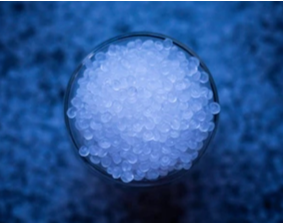Polymer Characterization Using the iEM Platform

Polymers are materials made of a large class of large molecules, including natural or synthetic materials. Polymers have unique properties such as heat resistance, hardness, and flexibility due to the type of molecules and the way they are bonded. Some polymers can be bent and stretched, while others are very tough. Therefore, polymers are widely applied across a spectrum of industries including the food, automotive and electronics, and play an essential and ubiquitous role in daily life. With the increasing prominence and application of polymer nanostructures, the characterization of polymers is becoming increasingly important.
Polymer Research by EM and AFM
Electron microscopy (EM) is a versatile and indispensable tool for polymer research. And the structure and morphology of polymers have been studied by EM for more than 60 years. Polymer characterization is a complex, multifaceted process that requires advanced platforms and experienced professional scientists to implement. SEM is a valuable tool to characterize and analyze small and large polymer structures due to its relatively easy preparation of polymer surfaces. Moreover, with the development of scanning probe microscopy techniques, the study of material structure has taken another step forward. AFM, in particular with a modified technique, has been applied to study polymers.
- SEM for polymer characterization
-The morphological observation of polymers
-The composition and elemental distribution of polymers
-The phase separation size and pattern shape of the polymer multiphase system
-The fracture characteristics of the polymer cross-section
- TEM for polymer characterization
-The internal structure of polymers
- The crystal shape, structure, and crystal phase distribution of polymers
- AFM for polymer characterization
-The surface morphology of polymers
-The order, orientation, and conformation of the polymer chain
-The size and uniformity of the phase separation size in the nanostructure
- The crystal shape, structure, and formation of polymers
Polymer Characterization at the iEM Platform

There are several polymer-specific problems when polymers are characterized by EM, including vacuum incompatibility, high electron irradiation sensitivity, inherent low contrast, and poor electrical conductivity. We offer a few advanced EM techniques for better observation of polymer materials, including low-vacuum scanning electron microscopy (LV-SEM), cryogenic electron microscopy (cryo-EM), and scanning transmission electron microscopy (STEM). These services offered at our platform enable minimal sample preparation with no sample coating and no chemical modification. For example, LV-SEM generates images from backscattered electron signals, without the need for pre-prepared samples to be examined under EM. It can achieve high magnification and resolution in a matter of minutes. Cryo-EM has a profound impact on the field of structural biology by freezing and stabilizing fragile samples in their pristine state for near-atomic resolution imaging. This technique is suitable to study soft polymers. With years of experience supporting polymer research, we can provide valuable information on a wide range of polymers and polymer materials, including polymer composites, copolymers, fibers, coatings, and more.
Applications of Our Services
- Identification of new polymeric materials.
- Tracing contamination during production.
- Failure analysis of components to generate materials that perform better.
The information available on our platform for polymers and polymeric materials includes shape, roughness, surface topography, cross-sectional topography, micro-phase separation, surface grain size, and so on. Creative Biostructure is committed to providing the perfect solution for researchers in the structure and properties of polymers and polymeric materials for a wide range of polymer characterization needs, including R&D, technical services, etc. To learn more about our capabilities, please feel free to contact us.

